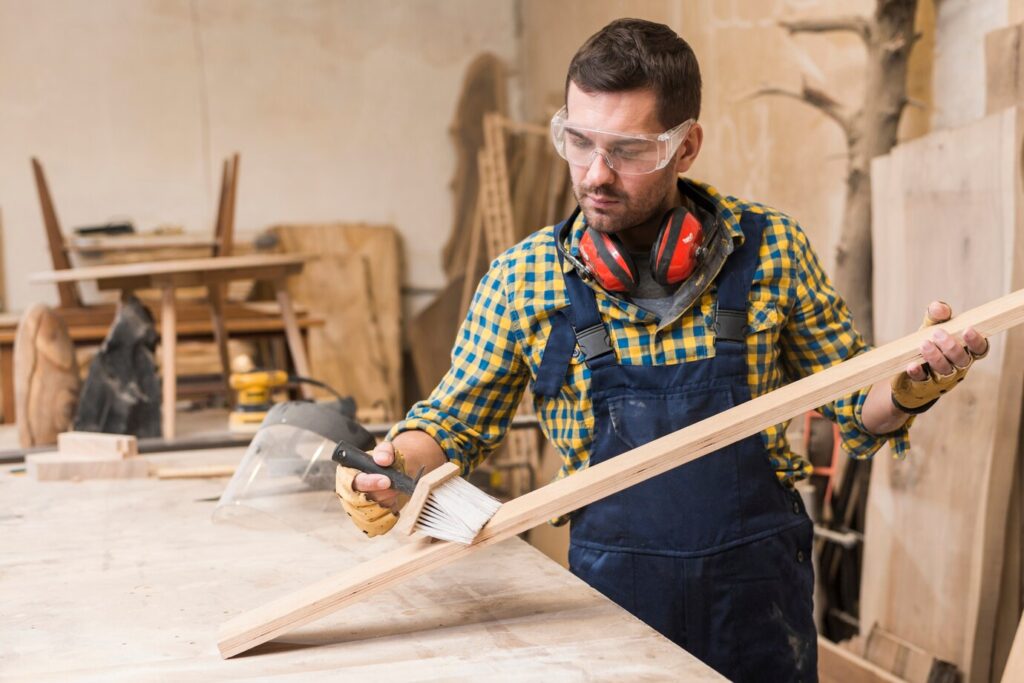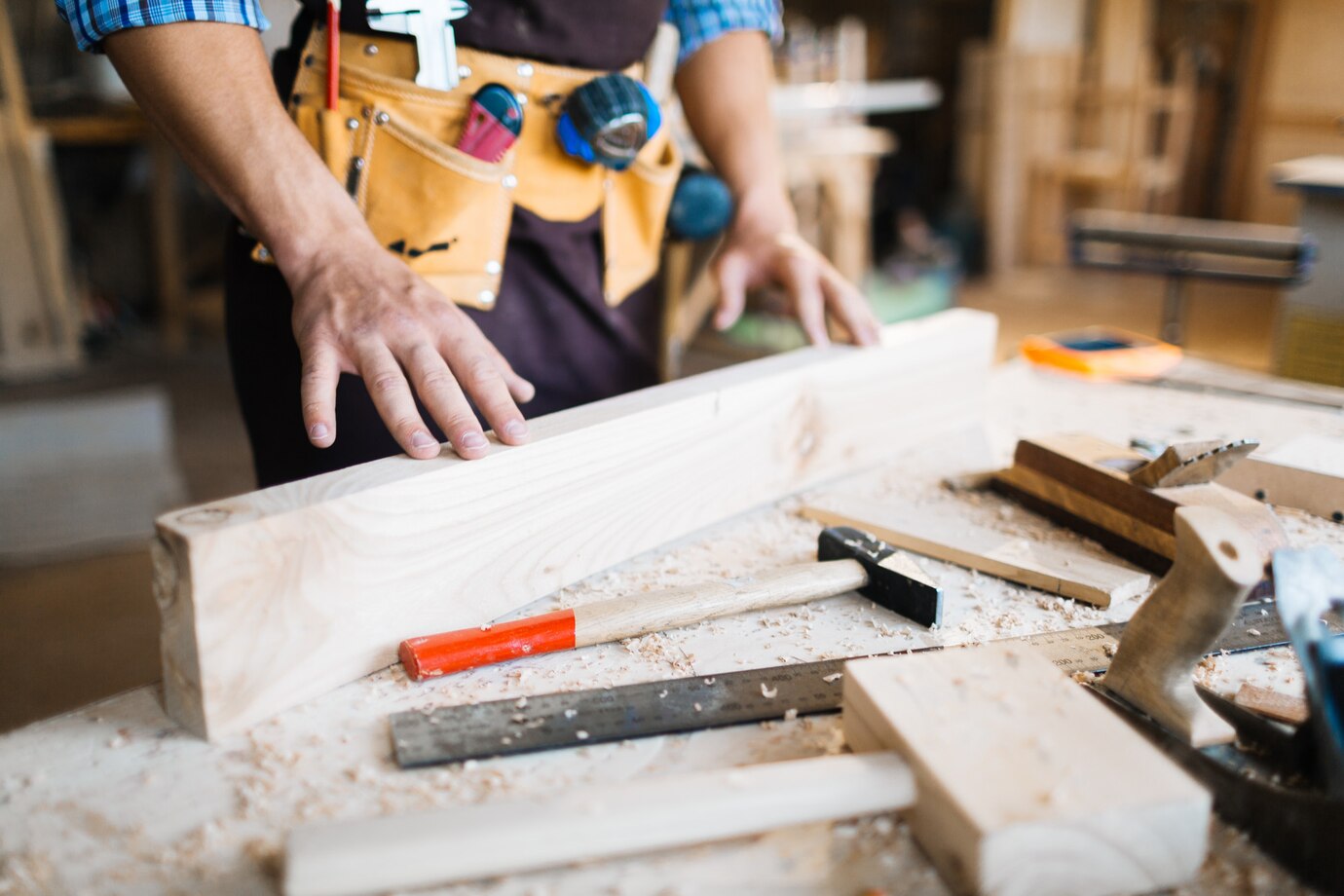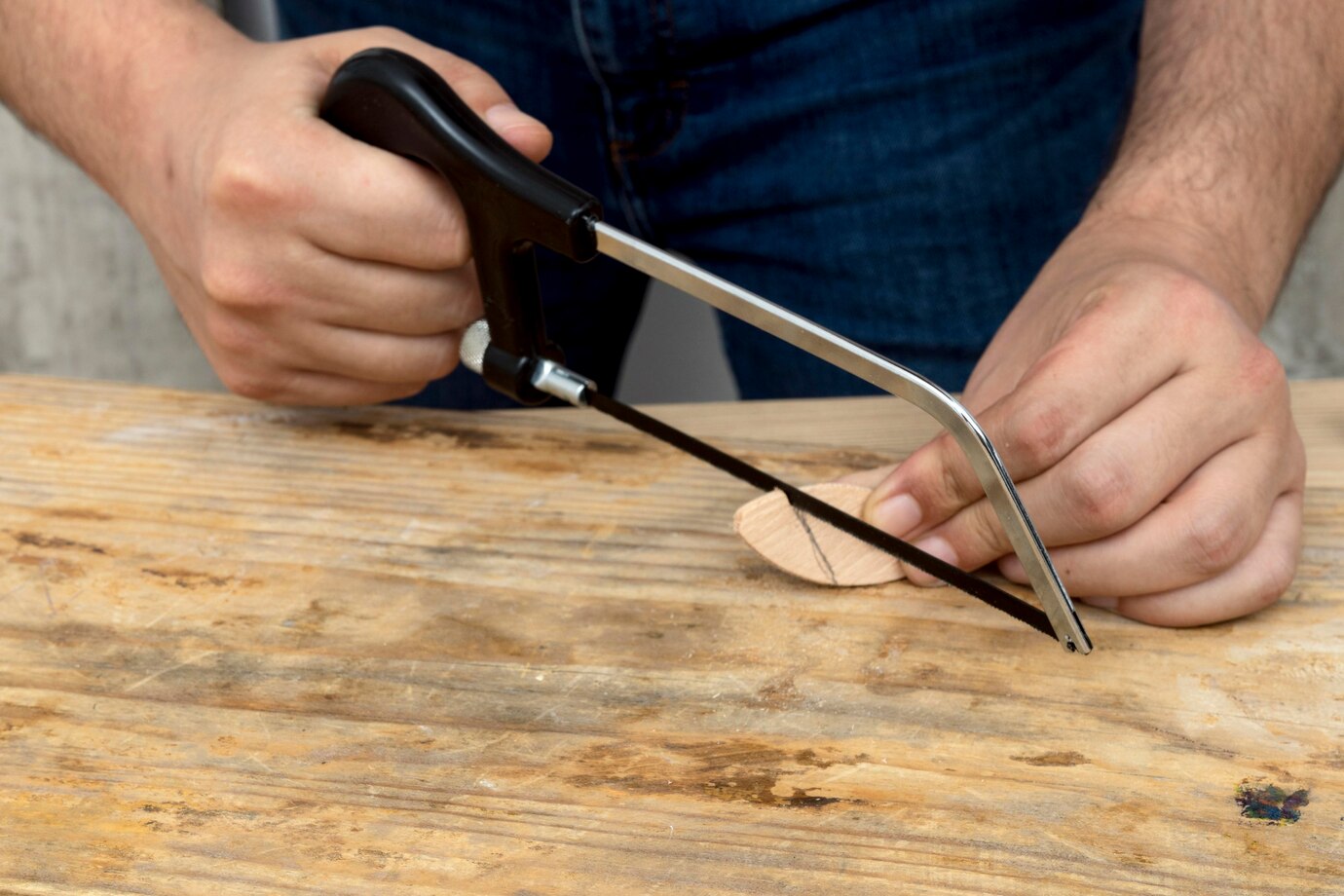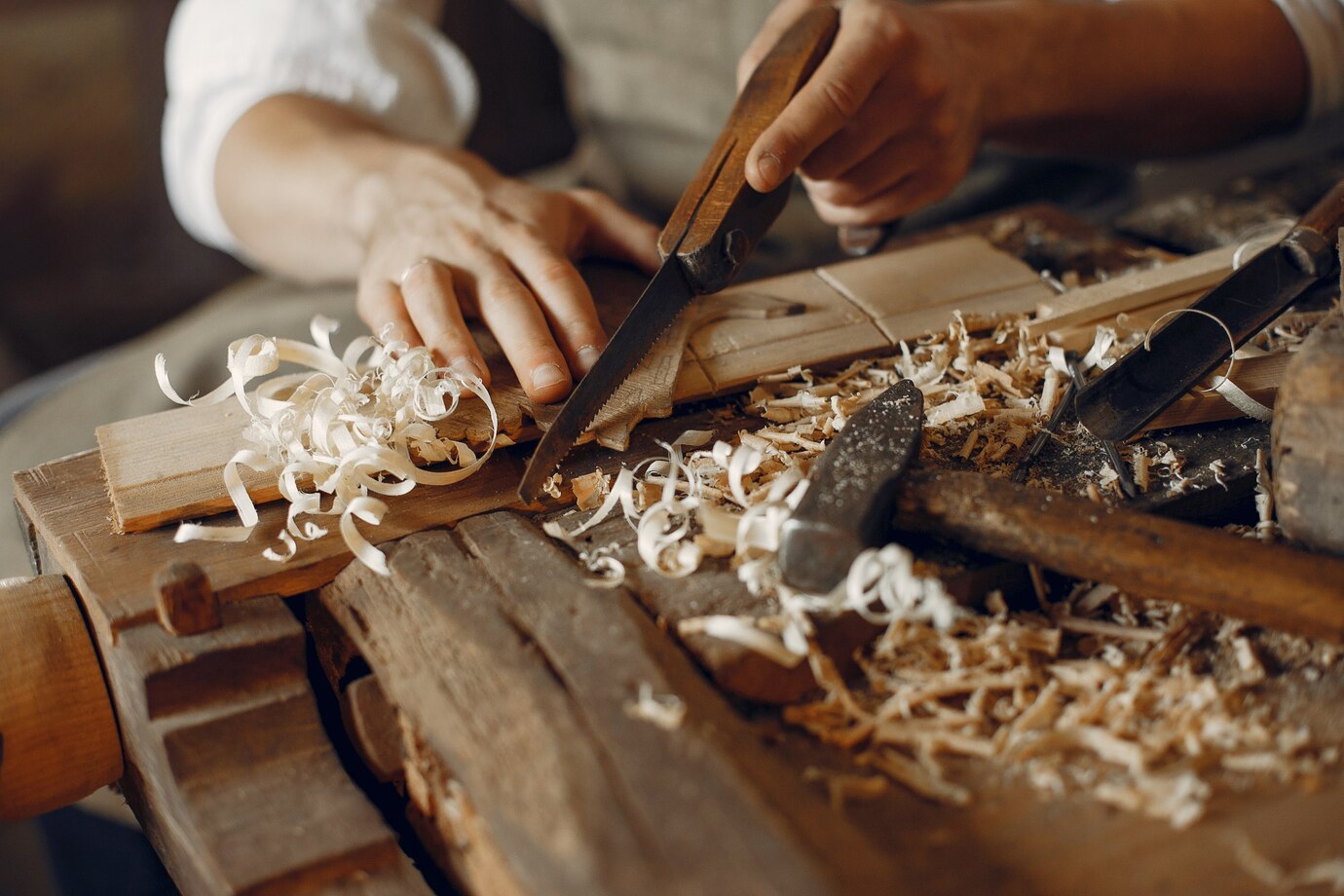The DIY & Crafts Blog

Best Safety Tips for DIY Woodworkers
Woodworking is a rewarding and creative hobby but comes with certain risks.
Safety must come first, whether you’re a novice or a seasoned craftsman. Prioritising safety keeps accidents and injuries at bay. Grasping woodworking safety tips transforms your skills into a shield. Mastering power tool usage and taking smart precautions make projects both fun and safe.
In this guide, we’ll discuss top-notch safety practices for DIY woodworkers. We’ll cover everything from sturdy protective gear to the art of tool handling, not to mention the magic of a well-organized workshop. Follow these guidelines to create a woodworking space that shines with safety and creativity.
Keep Your Workspace Organised

A cluttered workshop increases the likelihood of accidents. Keeping your work area clean and organised ensures a safer and more efficient environment.
Tips for Maintaining a Safe Workshop:
- Store tools safely: Use tool racks, pegboards, or boxes. This helps avoid trip hazards and stops tools from falling off workbenches.
- Ensure adequate lighting: Good visibility is crucial when using sharp tools. Position task lighting over workbenches to eliminate shadows.
- Keep workbenches clear: Don’t pile materials on your work surface. This helps prevent slips, tool problems, or accidental contact with sharp blades.
- Properly dispose of wood dust and scraps: Sawdust is very flammable. Clean your workspace often to lower fire risks and keep the air clean.
- Mark hazardous areas: Clearly mark spots near power tools, saw blades, and cutting zones. This will remind you and others to be careful.
- Use anti-fatigue mats: If you stand for long hours in the workshop, they help ease leg strain and boost your focus.
A tidy workshop helps avoid accidents, cuts down on frustration, and boosts workflow. This makes woodworking more precise and enjoyable.
How to Use Power Tools Safely
Power tools can make woodworking more efficient, but they also pose significant risks if not used correctly. Learning how to use power tools safely is vital for preventing accidents.
General Power Tool Safety Rules:
- Explore the manual. Learn about each tool’s features and safety rules before starting.
- Check your tools. Look for frayed cords, dull blades, loose parts, or missing guards before you turn them on.
- Use both hands. Grip firmly and precisely steer when wielding saws, drills, and routers.
- Power down and unplug. This helps avoid accidental starts. Always disconnect tools before making adjustments, changing blades, or cleaning.
- Use push sticks and feather boards. They help keep your hands safe from sharp blades and cutters.
- Clamp your materials. Secure your workpieces well to stop any sudden movement while cutting or drilling.
- Clear the emergency shutoff. Know where your emergency switches are located. Keep escape routes clear for quick access.
- Following these safety tips for power tools can reduce injury risks. This helps ensure a safe and successful woodworking experience.
Avoid Common Woodworking Injuries

Even experienced woodworkers can suffer from injuries if they become complacent. Knowing common hazards helps you take steps to avoid injuries in woodworking.
Common Woodworking Injuries and Prevention:
- Cuts and lacerations—Always keep your hands away from cutting paths, use guards on saws, and avoid distractions when using sharp tools.
- Kickback Conundrum – Hold the wood tightly. Feed it against the blade’s bite. Use anti-kickback devices on your table saw.
- Eye Safety Shield – Always wear proper eye gear before using tools. Keep a safe distance when cutting or sanding wood fibres.
- Ears Under Siege – Loud tools can cause hearing loss. Always wear your protective ear gear in noisy places.
- Breath of Fresh Air – Dust masks are your allies when sanding or working with treated wood. Ensure your workshop breathes freely to minimise airborne particle exposure.
- Burn Prevention Protocol – Avoid hot tool surfaces after use. Follow fire safety practices in your workshop.
- Be aware of these hidden dangers – By using safety measures, you’ll create a safer woodworking space for yourself and others.
Fire and Electrical Safety
Woodworking uses electrical tools and flammable materials. So, it’s key to follow fire and electrical safety precautions.
Fire Safety Tips:
- Store flammable materials safely. Keep solvents, varnishes, and stains in cool, airy places. Keep them away from heat and sunlight.
- Dispose of oily rags safely. They can catch fire on their own. So, store them in a sealed metal container filled with water before throwing them away.
- Keep a fire extinguisher close by. Use a Class ABC extinguisher for emergencies.
Electrical Safety Tips:
- Use grounded outlets. This helps prevent electrical shocks. Always ground tools and use Ground Fault Circuit Interrupters (GFCIs) when you can.
- Don’t overload circuits. Plugging many high-power tools into one outlet can lead to overheating and fire hazards.
- Check power cords. If they’re frayed or damaged, replace them right away. This helps prevent electric shocks and tool malfunctions.
- Keep cords clear of cutting spots. This way, sharp tools won’t accidentally cut power cords.
These precautions will help stop fire hazards and electrical accidents in your workshop. This way, you’ll create a safer space for your woodworking projects.
Conclusion

Prioritising safety is essential for every DIY woodworker
Embrace the art of woodworking with safety as your steadfast companion. Following these woodworking safety tips ensures your journey is both safe and productive. Master power tools to avoid woodworking injuries like a pro.
Stay sharp and alert, wear your protective gear, and tidy your workspace. When you build beautiful furniture or work on weekend projects, always keep safety first!
What safety measures do you follow in your woodworking projects? Share your experiences and tips in the comments!









